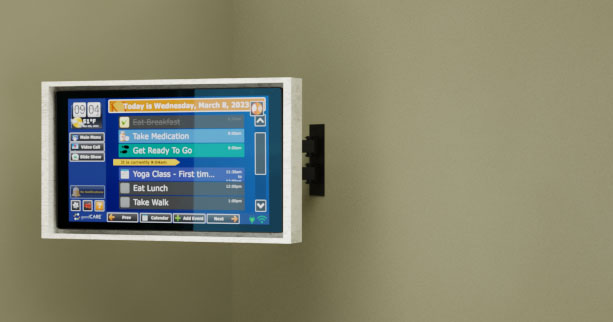How one man’s journey with dementia will change lives.
While recently speaking at the National Alzheimer’s Project Act Advisory Council meeting in Washington, D.C., Dr. Alexander “Sandy” Halperin, DDS talked about his life as a dementia patient. The outspoken advocate for the Alzheimer’s Disease Care and Cure cause, openly shared his daily struggles with the symptoms of the disease and its progression since being diagnosed in 2010. During his impassioned speech, Sandy talks about how he often requires the assistance of what he refers to as his “second brains.” Said brains taking the form of note pads, books and documents Sandy has authored over the years, his family memories scrapbook, the grandCARE system technology tool, and his loving wife of over 40 years, Gail.
What struck me most about Sandy’s speech is that save for a few brief moments of a lost train of thought, I wouldn’t have even thought he was a man struggling with the effects of such a disease given his poise and passion for speaking. Having experienced this first-hand, as my own grandmother suffers from late stage dementia, her outward appearance, cognitive, and physical capabilities are marked and noticeably different. She rarely speaks, remains largely confined to her bed in the nursing home where she resides, and her cognitive capabilities are virtually non-existent, as she no longer remembers me as her granddaughter or other close family members whom she has known for years. She is older, at 79 years of age, but her disease progression moved swiftly after receiving her initial diagnosis only a few short years ago. Unfortunately, by that time, she was already too far gone, to the point of requiring extensive care.
The early warning signs were there, the simple daily forgetfulness of “where did I leave my purse?”. To the re-telling of a story we’ve heard for the umpteenth time. In retrospect, red flags should have been going up, starting probably 10 to 15 years ago. As with anyone, getting older often comes with its fair share of “senior moments”, at some point however, those innocent “senior moments” become something more.
Despite Sandy’s open acknowledgement and awareness that one day, he too may find himself in such a condition as my grandmother, his spirit, courage, and fight to be a vibrant and public voice of awareness for the disease is certainly inspiring. His voice is getting heard and his message on alzheimer’s is loud and clear, “care and cure”. CNN is currently following Sandy, filming a multi-chapter documentary on his personal journey, in a piece appropriately titled, “Sandy’s Story.” The world renowned, Dr. Sanjay Gupta, will also be following Sandy Halperin’s story on “Sanjay Gupta, M.D.“
A brief excerpt of chapter one of “Sandy’s Story”, by Stephanie Smith, CNN:
“It is a horrifying, gripping, devastating disease that plays havoc on the family and on the patient,” says Gail Halperin, Sandy’s wife.
But, she says, what has softened the blow of Halperin’s diagnosis is the way he responded to it — at least after the initial stunned feeling subsided.
“He immediately came out and said, ‘I don’t want to cover this up. I want to share it with people and be proactive,'” his wife says.
Recent data suggest that such a response is rare: Nearly 13% of Americans reported experiencing worsening confusion or memory loss after age 60, but most — 81% — had not consulted with a health care provider about their cognitive issues, according to the March Alzheimer’s Association report.
One of the goals of the project is to achieve increased awareness, in the hopes that individuals and family member’s recognize the early warning signs sooner to increase the effectiveness of medical intervention, and even incorporate technology aids, like the grandCARE system, to help improve the patient’s quality of life and their ability to remain more independent.
To learn more about this project, and how you may be able to help, please go to:
http://napa.alz.org/national-alzheimers-project-act-backgroun






